Top Lists
10 Best Historical Places To visit in South Korea

South Korea has many historical places to visit that every traveler should see. These places give interesting insights into the country’s past and let you experience its culture. From ancient temples to well-preserved palaces, the historical sites in South Korea are both educational and impressive.
As a K-Drama fan, I’m familiar with most of these historical places in Korea. I hope to visit all of them one day. In this article, I will explore the best historical places to visit in Korea.
10. War Memorial of Korea
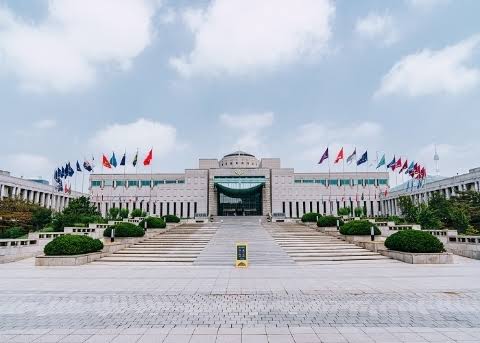
10th on the list of the best historical places to visit in South Korea is The War Memorial of Korea (Korean: 전쟁기념관) stands in Yongsan-dong, Yongsan-gu, Seoul, South Korea. It emerged in 1994 on the former army headquarters site to show and honor Korea’s military history. Its purpose is to prevent war by learning from the Korean War and aiming for peaceful North-South Korea reunification. The memorial building houses six indoor exhibition rooms and an outdoor display center showcasing war items and military gear from China, South Korea, and the United States.
9. Namsangol Hanok Village
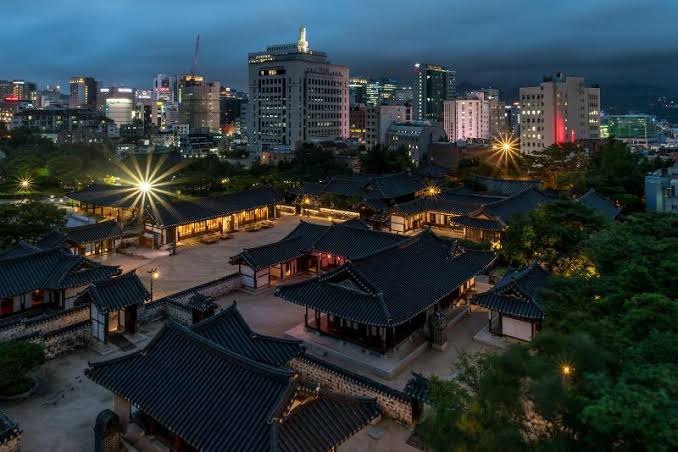
Namsangol Hanok Village, also known as “A Village of Traditional Houses in the Namsan Valley,” is a charming Korean village in central Seoul. It showcases restored Hanok (Korean traditional houses), lovely pavilions, a small pond, and an intriguing time capsule.
The village provides a chance to immerse oneself in the diverse life of the Joseon era, spanning from nobility to everyday people.
Established in 1994 to celebrate Seoul’s 600th anniversary, Namsangol Hanok Village displays both aristocratic mansions and commoner homes, capturing various social classes’ residential customs. Despite its small size, the village boasts picturesque surroundings.
The entrance is free, and the village is closed on Tuesdays. It’s conveniently located near Chungmuro Station, where you can access Seoul Metropolitan Subway Line 3 and Line 4.
8. Myeongdong Cathedral

K-dramas often feature this church. It’s called the Cathedral Church of Our Lady of the Immaculate Conception (in Latin: Ecclesia Cathedralis Nostrae Dominae Immaculatae Conceptionis; in Korean: 천주교 서울대교구 주교좌 명동대성당), but it’s informally known as Myeongdong Cathedral. This church is important for the Roman Catholic Archdiocese of Seoul. It’s in the Myeongdong neighborhood of Jung-gu, Seoul, South Korea, and the Archbishop of Seoul, Peter Chung Soon-trick, works here.
The church is dedicated to the Blessed Virgin Mary as the Immaculate Conception. Pope Gregory XVI declared her the principal Patroness of Korea in 1841. This cathedral is well-known and serves as a community landmark and tourist attraction. It’s a significant symbol of Roman Catholicism in Korea. The Korean government recognized it as a historic site (No. 258) on November 22, 1977, which makes it a valuable cultural property of the country.
7. Jeju Island
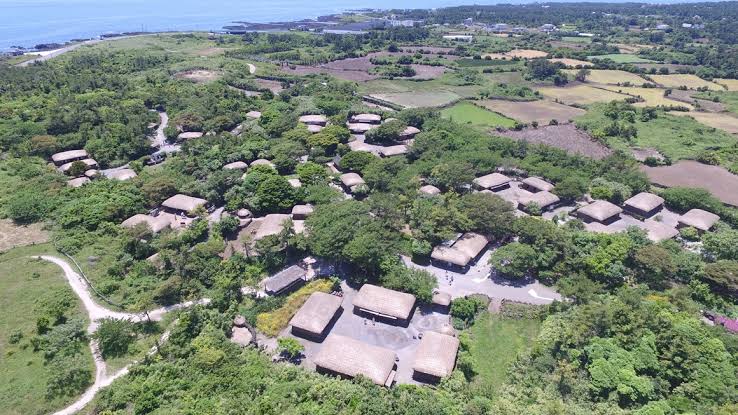
In most Korean dramas I’ve seen, they punish those who commit sins or crimes instead of killing them. They send the person to Jeju Island. I’d like to see Jeju Island someday, how about you?
Jeju Island is a famous vacation spot, known for its natural beauty, volcanoes, and clean beaches. You can do various things there, like hiking up South Korea’s highest peak, Hallasan Mountain, or exploring one of the world’s longest lava caves, Manjanggul Cave. A UNESCO World Heritage Site, Seongsan Ilchulbong, gives a beautiful sunrise view from its volcano crater. To experience the island’s charm, you can walk along the Jeju Olle Trail, a series of scenic paths.
You can reach Jeju Island by flights from major Korean cities or by ferry from Busan, Mokpo, and Wando. Approximately 15 million people visit the island yearly, according to Esimradar.
6. Suwon Hwaseong Fortress
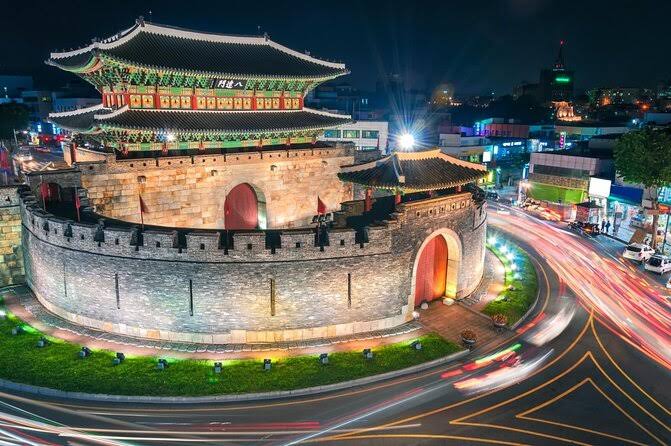
Hwaseong Fortress, also known as Suwon Hwaseong, encircles the heart of Suwon, the capital of Gyeonggi-do province in South Korea. King Jeongjo of the Joseon dynasty built it between 1794 and 1796 to hold and honor his father’s, Prince Sado’s, remains. This story of Prince Sado might have been portrayed in the Korean movie “THE SCHOLAR WHO WALKS AT NIGHT.” As per one source, Suwon Hwaseong Fortress remains attractive and charming even today.
5. Jogyesa Temple
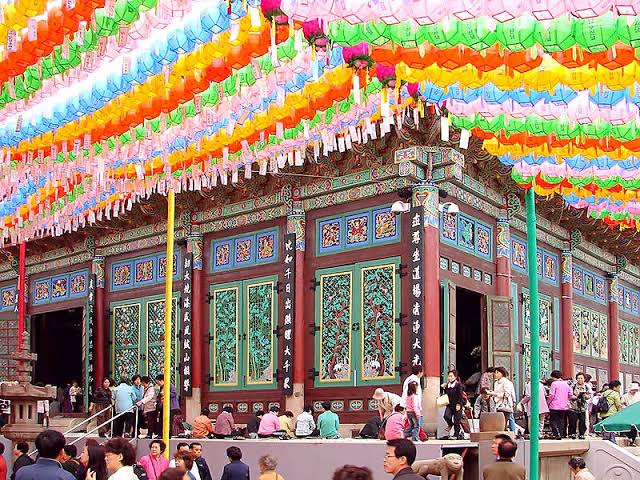
Jogyesa Temple, founded in the late 14th century, is the primary temple of the Jogye Order of Korean Buddhism. In 1936, it became the order’s main temple. It plays a leading role in South Korea’s Seon Buddhism.
Jogyesa Temple is the central place for Zen Buddhism in Korea, where many people worship. It holds significant importance for the city and the nation’s religious identity.
We don’t have such a temple here. Whenever I watched K-drama, I’d think, “Wow! It’d be great to visit and see how it looks in real life.”
4. Gyeongju
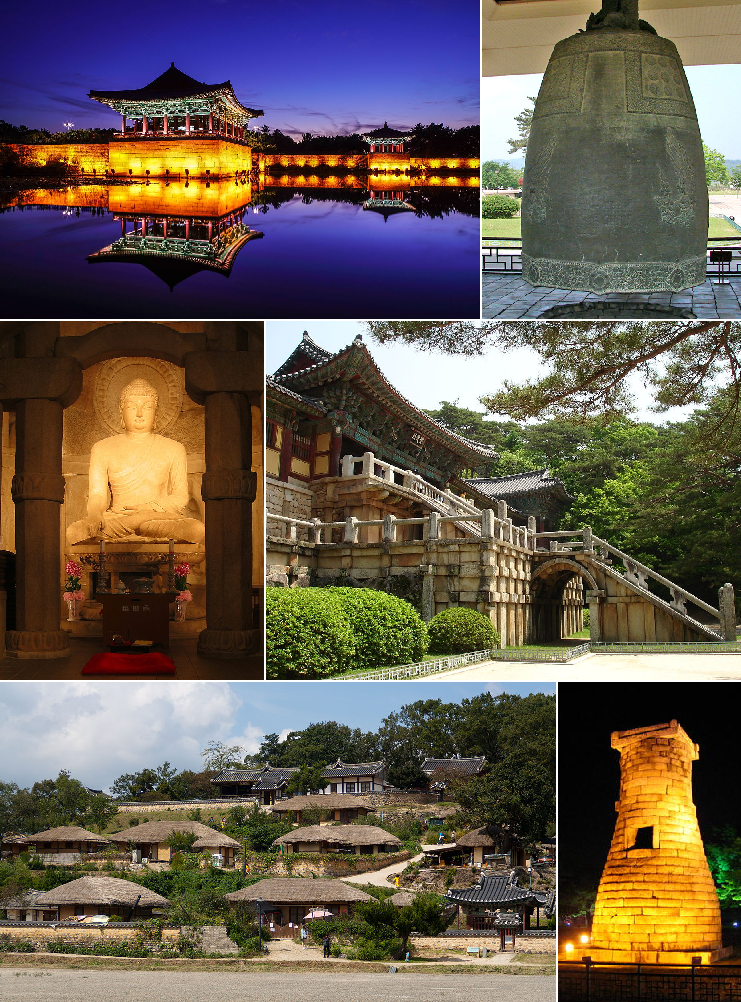
Gyeongju, once known as Seorabeol, is a city by the coast in the southeastern part of North Gyeongsang Province, South Korea.
According to touropia, Gyeongju used to be the capital of the Silla Kingdom, over 2,000 years ago. It’s an amazing spot with many temples and cultural festivals. To begin your journey, visit Bulguksa Temple, an incredible Buddhist masterpiece from the 8th century. Then, hike to the Seokguram Grotto for more Buddhist artifacts and it is one of the best historical places to visit in South Korea
3. Bukchon Hanok Village
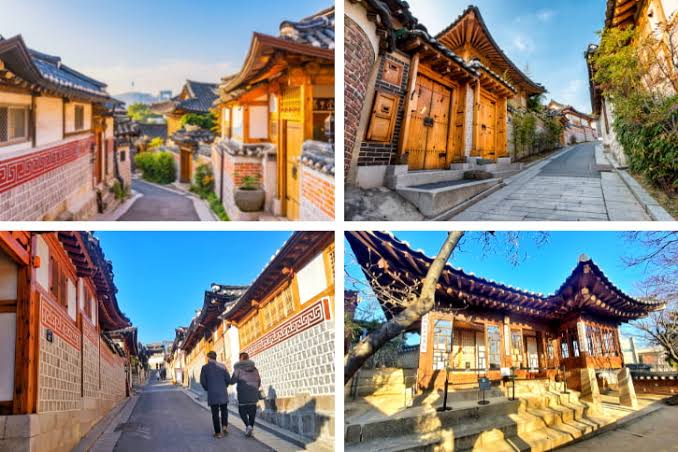
Bukchon Hanok Village is one of the best historical places to visit in South Korea , a historical Korean village in Seoul, rests atop a hill amid Gyeongbok Palace, Changdeok Palace, and Jongmyo Royal Shrine. This village boasts alleys, hanok (traditional houses), all preserved to display a 600-year-old city setting.
Today, Bukchon Hanok Village offers an array of attractions like restaurants, tea houses, and cultural centers. It’s among the 12 historical sites worth visiting in Seoul. The village lies between Gyeongbokgung Palace, Changdeokgung Palace, and Jongmyo Shrine, surrounded by stunning scenery.
2. N Seoul Tower
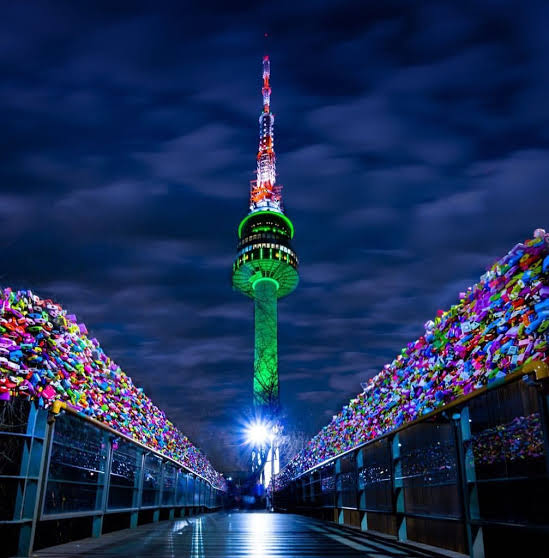
I haven’t seen this in any Korean movies, but it’s an incredible historical place to visit in Korea. The N Seoul Tower, also known as Namsan Tower or Seoul Tower, stands on Nam Mountain in central Seoul, South Korea. It’s a communication and observation tower that reaches 236 meters in height, making it the second-highest point in Seoul and a well-known local landmark.
1. Korean Palaces
How do I visit the best historical place in Korea, “The Korean Palaces”?
According to Wikipedia, These palaces were built in a unique Korean architectural style during ancient times, influenced by China but maintaining distinct features. The palaces were constructed by different kingdoms, starting from 1 BC, with some details unknown. The palaces of Gojoseon cannot be traced, while those of the Three Kingdoms era can be imagined through historical records. Goguryeo’s Anhak Palace was built in 427 AD after moving the capital. Baekje had palaces in Sabi and Gongju, while Silla had Banwolseong in Gyeongju. Balhae’s Sanggyeong Palace was one of the largest.
-
Gyeongbokgung Palace
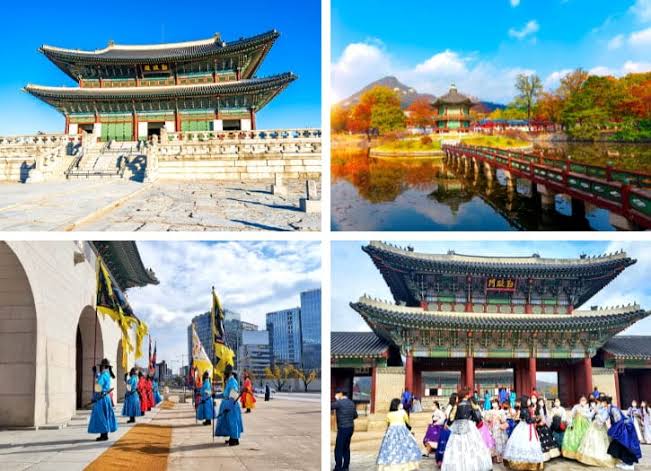
Gyeongbokgung, also called Gyeongbok Palace, was the main royal palace of the Joseon dynasty in South Korea. Constructed in 1395, it’s situated in northern Seoul. It served as the residence for Joseon kings, their families, and the government. Despite being damaged and abandoned after a fire during the Imjin War, it was restored in the 19th century with 7,700 rooms and over 500 buildings. The palace reflects traditional Korean architectural principles. Imperial Japan destroyed parts of it in the early 20th century. In 1963, it gained cultural property designation. Restoration efforts have been ongoing since the 1990s, and the palace complex now houses the National Palace Museum and National Folk Museum.
-
Changdeokgung Palace
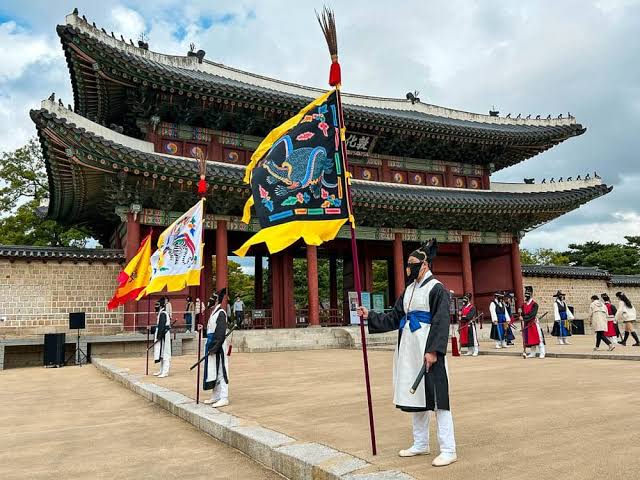
Changdeokgung, also called Changdeok Palace, is a historic palace in Seoul, South Korea. It’s one of the “Five Grand Palaces” from the Joseon dynasty. Unlike Gyeongbok Palace, it blends naturally with the land. Many Joseon kings preferred it. It has ancient elements not in Gyeongbokgung. Japanese occupation damaged it significantly. Only about 30% of the original East Palace Complex remains today.
-
Changgyeonggung
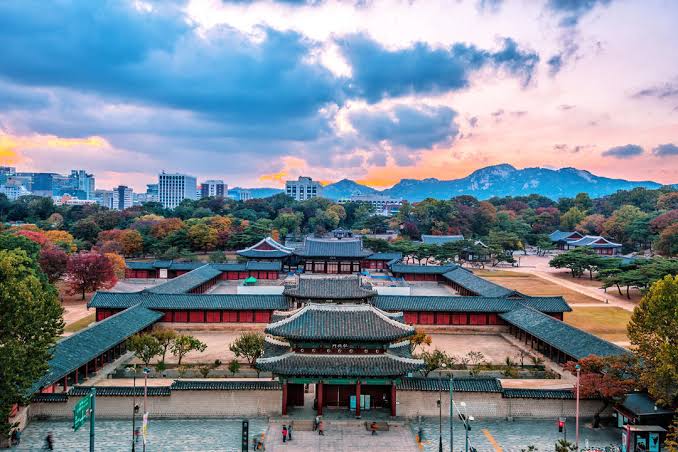
King Sejong constructed the palace in the mid-15th century for his father, Taejong. Originally named “Suganggung,” it was expanded in 1483 by King Seongjong, getting its current name then. Japan’s attempts to conquer Korea in the late 15th to 16th century caused much destruction. Subsequently, Joseon Kings rebuilt it, but Japan destroyed it again in the early 20th century, systematically tearing it down for a modern park like Tokyo’s Ueno Park.
In the Japanese colonial era, a zoo, botanical garden, and museum were added, forming the “Changgyeongwon Park,” with “won” representing ‘zoo’ in Korean. After 1945’s independence and the 1950-53 Korean War, the zoo was restocked through Korean donations and foreign zoos gifts. In 1983, the zoo and botanical garden moved to today’s Seoul Grand Park.
-
Deoksugung Palace
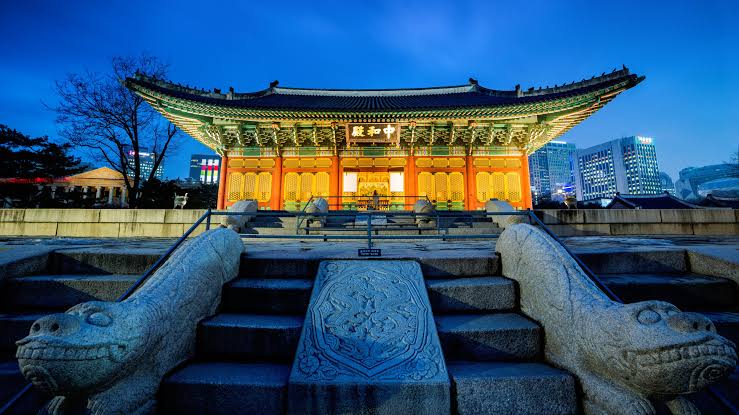
Deoksugung, also known as Gyeongun-gung or Deoksu Palace, was a royal residence in Seoul for Korea’s kings until Japan annexed Korea in 1910. It’s one of the “Five Grand Palaces” from the Joseon dynasty, featuring various architectural styles like wood and stone. The palace has gardens, a statue of King Sejong, and the National Museum of Art. Deoksugung stands out with a modern garden and the Changing of the Royal Guard event. A famous urban myth claims couples walking the Deoksugung Stonewall will break up.
-
Gyeonghuigung
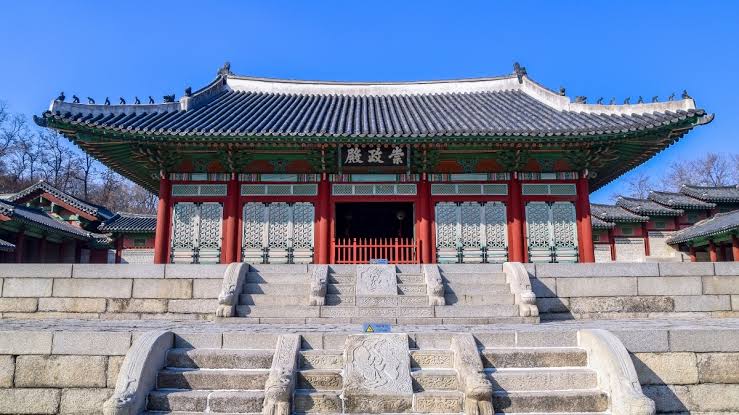
Gyeonghui Palace, also known as Gyeonghuigung in Korean, stands in Seoul, South Korea. The Joseon Dynasty constructed it as one of the “Five Grand Palaces.”
Here Is The Summary of The 10 Best Historical Places To visit in South Korea
- Korean Palaces
- N Seoul Tower
- Bukchon Hanok Village
- Gyeongju
- Jogyesa Temple
- Suwon Hwaseong Fortress
- Jeju Island
- Myeongdong Cathedral
- Namsangol Hanok Village
- War Memorial of Korea
